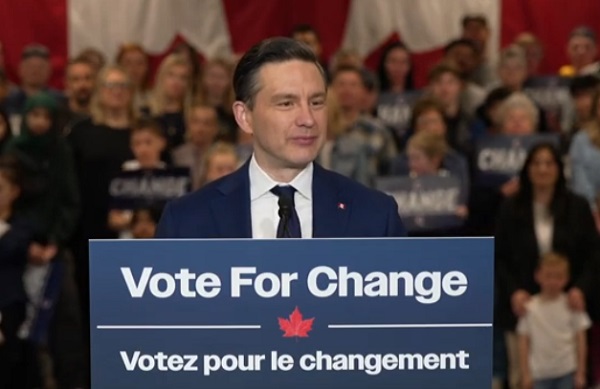Great Reset
A One-Stop Shop for Illegal Migration Reveals Ongoing Plans for Illegal Immigration

From the Center for Immigration Studies
By Todd Bensman
UN/NGO ‘mall’ under construction in southern Mexico shows they expect continued illegal flow to the U.S.
A 75,000-square-foot mega-mall, built to enable industrial-scale illegal immigration to the U.S. southern border, is almost online here in this key entry city in southern Mexico just across the border from Guatemala.
Scheduled to open in December, the mall suggests that powerful global agencies, the United Nations key among them, are bullish on a long-term future of continued heavy U.S.-bound illegal migrant traffic through Mexico – no matter the outcome of the November 5 American presidential election.
Those bullish investors are the dozens of migration-oriented UN agencies and non-governmental organizations (NGOs) that have already plowed hundreds of millions of dollars of U.S. taxpayer money into constructing a permanent network of way stations for thousands of miles along the migration routes from South America to the U.S. border during the four years of the Biden-Harris administration.

A Nicaraguan on his way to the U.S. showed his UN cash card in Monterrey, Mexico. January 2023 photo by Todd Bensman.
The record hundreds of millions of dollars in aid is distributed at the way station network in the form of cash cards, cash in envelopes, food, vouchers for onward travel and lodging, medical treatment, pharmaceuticals, legal counseling, and much more. (See: “UN Budgets Millions for U.S.-Bound Migrants in 2024”.) This aid has without doubt helped the UN and its growing constellation of NGOs keep the masses moving north through Tapachula in record numbers toward irresistible Biden border policies that have welcomed across arrivals in historic millions. (See: “Biden Admin. Sends Millions to Religious Nonprofits Facilitating Mass Illegal Migration”.)
The UN and NGOs are betting on a busy future in Mexico. Going forward, the purpose of this one strategically located facility is to “respond comprehensively to the needs of people who arrive in Mexico … migrant refugees who travel together from all continents, and arrive in Tapachula in need of a response or attention”, Giovanni Lepri, the Mexico representative for the United Nations High Commission on Refugees (UNHCR), told reporters when Mexico’s foreign ministry announced it in April 2024.
But the Tapachula mall represents a far more expansive billion-dollar migration-route safety net constructed during the Biden-Harris years using record-breaking U.S. taxpayer contributions.
It plugs into two other big one-stop-migration malls erected in the northern Mexico cities of Monterrey and Tijuana. These gleaming new Mexican facilities, and plenty of other UN and NGO substations in Mexican towns and cities, form the final terminus of the trails to the United States lined with pots of U.S. taxpayer money. And they are representative of what’s happening throughout Latin America.
The UN High Commissioner for Refugees (UNHCR), which received $1.9 billion in U.S. taxpayer funds in 2024 and $2.1 billion in 2023 (compared to $377 million in 2019) for migration assistance throughout Latin America, started building the Tapachula facility on land donated by Chiapas State as part of the deal with Mexico to run it.
The UNHCR, UN’s International Organization for Migration (IOM), UNICEF, and dozens of private, often religion-based, NGOs scattered around Tapachula will work alongside one another under one massive roof here — evidently planning a years-long collaboration.
None of the UN/NGO pots of gold are exactly a secret but are relatively hard to find for the uninitiated. And harder to grasp as connected to domestic American policies or as a legitimate point of political debate.
The UN’s 2024 update to the “Regional Refugee and Migrant Response Plan” (RMRP for short), a UNHCR and IOM planning and budget document, lays out in detail that it planned to hand out nearly $1.6 billion in 17 Latin America countries using its network of 248 different NGOs. (For the complete list of involved groups, see p. 268, here, and explore their activities further with this interactive tool).
That was on top of the 2023-2024 RMRP plan, which called for 228 NGOs (all listed on p. 268 of the list of involved groups) to spend $1.72 billion on trailside assistance to mass migration that all know will illegally pass through many countries and, finally, breach the U.S. border.
Hundreds of millions of dollars for all of this comes straight from U.S. taxpayers in the form of sharply increased US State Department bequeathals, USAID grants, and flexible spending contributions to the UNHCR and IOM.
Too Far for Average Americans to See

Necocli, Columbia to Acandi, Panama
For an idea of how U.S. tax money is spent to flood the American border, the far northwest Colombian town of Necocli provides a window. This is a major staging town for migrants preparing to boat across the Gulf of Uraba for smuggler-guided backpack trips through the so-called “Darien Gap” jungle passage that leads into Panama and eventually Mexico.
In Necocli, the UN and NGO agencies have arrayed themselves in something like an outdoor swap meet of NGO booths and an IOM mobile bus office on a few acres next to the gulf beach, the Center for Immigration Studies observed during an August 2024 research trip to the region. The Jewish NGO Cadena was set up in a booth next to the Adventist Development and Relief Agency (ADRA).
NGO and UN workers there said they provide a variety of trail advice — and plenty of supplies to the immigrants, to include socks, underwear, backpacks, bug repellant, water filters, sunscreen, and Vaseline.
And food.
“Like things easy to carry so they can eat and be done with it,” a Cadena worker said.
ADRA provides children’s classes thrice weekly on how to avoid sexual predators among the strange men traveling the Darien Gap.
On this day, a Cadena worker said she’d given out thousands of food items such as packaged soup to more than 3,000 migrants during the previous few months, showing the last of it: a box with a handful of granola bars she hoped to hand out soon so she could go home.
What about critics who say NGOs like Cadena are helping migrants break the laws of many countries?

A Cadena NGO worker in Necocli, Colombia. August 2024 photo by Todd Bensman.
“As an organization,” the Cadena worker responded. “We’re not here to judge. We’re just here to provide a service.”
”But aren’t you helping them migrate?”
“Only by giving them the things that I mentioned, not money or fare, just certain resources for the trip,” she explained.
UNHCR workers carrying iPads interacted with groups of migrants sitting in chairs under open-air shelters, surveying them and their needs for the trail ahead. The IOM workers hand out hygiene kits to women, but had run out of the kits some days earlier.
Across the Uraba Gulf in the staging town of Acandi, the Clan del Gulfo paramilitary controls the human smuggling operations into the Darien Gap. The cartel runs two migrant camps where the migrants are brought for final journey preparations.
The center gained permission to access one of the camps, “Camp 1”. Inside, the Center found NGOs providing medical services, legal counseling, and food.
Furthermore, Colombian banks also have been allowed to set up a money-wiring service so that migrants could pay their foot guides.
All involved could not possibly be unaware that the people they are assisting intend to break the immigration laws of a half dozen countries up trail, including, ultimately, illegally breaching the American border.
A Bright Future for Mass Migration?
The UN and NGO’s migration advocacy industrial complex is now preparing its 2025-2026 plan for the trails of Latin America.
A request for input from its NGO partners suggests an ambitious coming year of providing “cash and voucher assistance”, “food security”, “humanitarian transportation”, “shelter”, and most other basic human needs.
Who will be the recipients?
Refugees and migrants in-transit (of all nationalities) who cross an international border.
armed forces
Yet another struggling soldier says Veteran Affairs Canada offered him euthanasia

From LifeSiteNews
‘It made me wonder, were they really there to help us, or slowly groom us to say ‘here’s a solution, just kill yourself.’
Yet another Canadian combat veteran has come forward to reveal that when he sought help, he was instead offered euthanasia.
David Baltzer, who served two tours in Afghanistan with the Princess Patricia’s Canadian Light Infantry, revealed to the Toronto Sun that he was offered euthanasia on December 23, 2019—making him, as the Sun noted, “among the first Canadian soldiers offered therapeutic suicide by the federal government.”
Baltzer had been having a disagreement with his existing caseworker, when assisted suicide was brought up in in call with a different agent from Veteran Affairs Canada.
“It made me wonder, were they really there to help us, or slowly groom us to say ‘here’s a solution, just kill yourself,” Baltzer told the Sun.“I was in my lowest down point, it was just before Christmas. He says to me, ‘I would like to make a suggestion for you. Keep an open mind, think about it, you’ve tried all this and nothing seems to be working, but have you thought about medical-assisted suicide?’”
Baltzer was stunned. “It just seems to me that they just want us to be like ‘f–k this, I give up, this sucks, I’d rather just take my own life,’” he said. “That’s how I honestly felt.”
Baltzer, who is from St. Catharines, Ontario, joined up at age 17, and moved to Manitoba to join the Princess Patricia’s Canadian Light Infantry, one of Canada’s elite units. He headed to Afghanistan in 2006. The Sun noted that he “was among Canada’s first troops deployed to Afghanistan as part Operation Athena, where he served two tours and saw plenty of combat.”
“We went out on long-range patrols trying to find the Taliban, and that’s exactly what we did,” Baltzer said. “The best way I can describe it, it was like Black Hawk Down — all of the sudden the s–t hit the fan and I was like ‘wow, we’re fighting, who would have thought? Canada hasn’t fought like this since the Korean War.”
After returning from Afghanistan, Baltzer says he was offered counselling by Veteran Affairs Canada, but it “was of little help,” and he began to self-medicate for his trauma through substance abuse (he noted that he is, thankfully, doing well today). Baltzer’s story is part of a growing scandal. As the Sun reported:
A key figure shedding light on the VAC MAID scandal was CAF veteran Mark Meincke, whose trauma-recovery podcast Operation Tango Romeo broke the story. ‘Veterans, especially combat veterans, usually don’t reach out for help until like a year longer than they should’ve,’ Meincke said, telling the Sun he waited over two decades before seeking help.
‘We’re desperate by the time we put our hands up for help. Offering MAID is like throwing a cinderblock instead of a life preserver.’ Meincke said Baltzer’s story shoots down VAC’s assertions blaming one caseworker for offering MAID to veterans, and suggests the problem is far more serious than some rogue public servant.
‘It had to have been policy. because it’s just too many people in too many provinces,” Meincke told the Sun. “Every province has service agents from that province.’
Veterans Affairs Canada claimed in 2022 that between four and 20 veterans had been offered assisted suicide; Meincke “personally knows of five, and said the actual number’s likely close to 20.” In a previous investigation, VAC claimed that only one caseworker was responsible—at least for the four confirmed cases—and that the person “was lo longer employed with VAC.” Baltzer says VAC should have military vets as caseworkers, rather than civilians who can’t understand what vets have been through.
To date, no federal party leader has referenced Canada’s ongoing euthanasia scandals during the 2025 election campaign.
2025 Federal Election
Carney Liberals pledge to follow ‘gender-based goals analysis’ in all government policy

From LifeSiteNews
‘We will continue to update the GBA+ tool to ensure it reflects the identities and values of all Canadians, including diversity as a core value.’
Prime Minister Mark Carney’s Liberal Party is promising to effectively mandate that all government policies and initiatives be measured using “Gender Based Analyses” before being approved and implemented.
The Liberal’s “Canada Strong” election platform, under the Gender Based Analyses (GBA) tab, pledges to “ensure that every measure in this platform will be implemented with a full GBA+ analysis – so that we can continue to build Canada strong, for all Canadians.”
“A Mark Carney-led government will support and champion all Canadians, including by reviewing policies and programs using an intersectional lens. We will continue to update the GBA+ tool to ensure it reflects the identities and values of all Canadians, including diversity as a core value.”
The GBA tab also mentions “2SLGBTQI+ people” four times, three of which are related to funding promises.
It notes that a Carney-led government would protect “the values” the Charter of Rights and Freedoms was “founded on – which are under threat – and ensuring the protection of women, people with disabilities, racialized and Indigenous communities, and 2SLGBTQI+ people.”
Carney already stated his government would provide sterilizing puberty blockers to children “without exception,” calling harmful “transitioning” surgeries and chemical “treatments” a “fundamental right.”
While campaigning to become Liberal Party leader, Carney had also promised that his government would pursue an agenda of “inclusiveness” to counter U.S. President Donald Trump’s more socially conservative agenda.
His promise to promote “inclusiveness” in Canada in opposition to Trump’s agenda came only days after former Prime Minister Justin Trudeau’s Liberal government promised an extra $41.5 million in taxpayer funds to advance 106 pro-LGBT projects “across Canada.”
Carney, whose ties to globalist groups have had Conservative Party leader Pierre Poilievre call him the World Economic Forum’s “golden boy”.
Canadians will head to the polls on April 28.
-

 Automotive1 day ago
Automotive1 day agoHyundai moves SUV production to U.S.
-

 Entertainment2 days ago
Entertainment2 days agoPedro Pascal launches attack on J.K. Rowling over biological sex views
-

 2025 Federal Election1 day ago
2025 Federal Election1 day agoAs PM Poilievre would cancel summer holidays for MP’s so Ottawa can finally get back to work
-

 2025 Federal Election1 day ago
2025 Federal Election1 day agoPoilievre Campaigning To Build A Canadian Economic Fortress
-

 armed forces18 hours ago
armed forces18 hours agoYet another struggling soldier says Veteran Affairs Canada offered him euthanasia
-

 2025 Federal Election1 day ago
2025 Federal Election1 day agoThe Cost of Underselling Canadian Oil and Gas to the USA
-

 Automotive1 day ago
Automotive1 day agoCanadians’ Interest in Buying an EV Falls for Third Year in a Row
-

 conflict17 hours ago
conflict17 hours agoWhy are the globalists so opposed to Trump’s efforts to make peace in Ukraine?




